The Best Saws for Cutting Aluminum and Pro Techniques
Product Comparison Table
| IMAGE | PRODUCT | DETAILS | ||
|---|---|---|---|---|
|
Best All-Round Aluminum Cutter
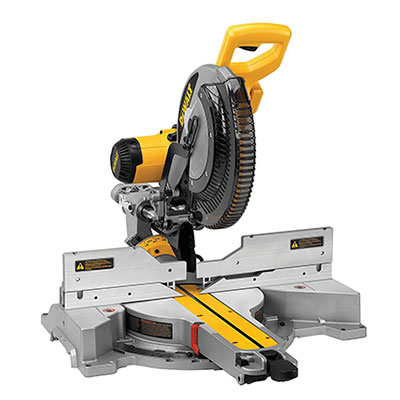
|
Best All-Round Aluminum Cutter
|
Features
|
Check Price at Amazon DeWalt DWS780 Review DeWalt DWS780 Review | |
|
Best for Wide Aluminum Plate
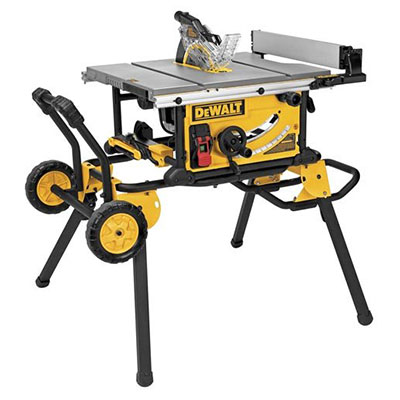
|
Best for Wide Aluminum Plate
|
Features
|
Check Price at Amazon DeWalt DWE7491RS Review DeWalt DWE7491RS Review | |
|
Best for Aluminum Curves
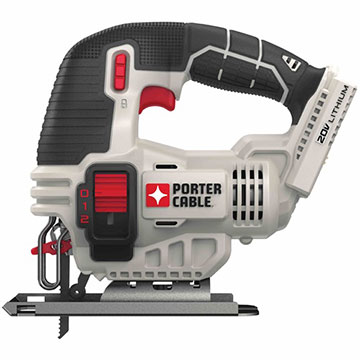
|
Best for Aluminum Curves
|
Features
|
Check Price at Amazon Porter-Cable PCC650 Review Porter-Cable PCC650 Review | |
|
Best for Thick Aluminum
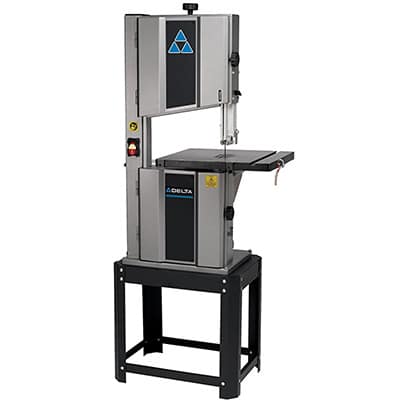
|
Best for Thick Aluminum
|
Features
|
Check Price at Amazon Control Spray 250 Review Control Spray 250 Review | |
|
Best for Light/Thin Aluminum
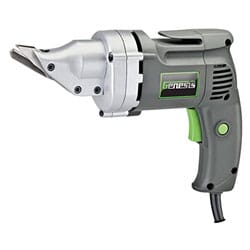
|
Best for Light/Thin Aluminum
|
Features
|
Check Price at Amazon Genesis GES40 Review Genesis GES40 Review | |
|
Best for Cutting Circular Holes in Aluminum
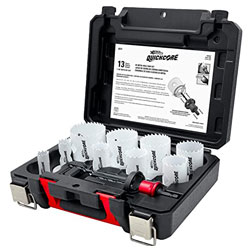
|
Best for Cutting Circular Holes in Aluminum
|
Features
|
Check Price at Amazon Disston Quickcore Review Disston Quickcore Review | |
|
Best Budget Aluminum Cutters
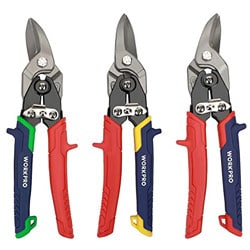
|
Best Budget Aluminum Cutters
|
Features
|
Check Price at Amazon Workpro W000403A Review Workpro W000403A Review |
Cutting Aluminum — Ultimate How-To and Tools
When shaping tiles, you use a tile saw, chopping trees utilize a chainsaw, and for cutting aluminum? To be honest, anything you darn well please (ok, maybe not a chainsaw, that would be ridiculous overkill).
The truth is, aluminum — with its low density and relatively high pliability — is exceptionally forgiving, and the most straightforward of all metals to trim and form. For some thin sheets, you could even use your wife’s kitchen scissors — although you’ll have to resharpen them afterward if you want to avoid her wrath.
That said, different aluminum formats do benefit from being addressed with a specific tool — suitable for their size, shape, thickness, and the type of cut you require.
Consider this article your complete aluminum cutting guide — giving you pro advice on shearing techniques and the best aluminum cutting saw machines.
Tools to Cut Aluminum
The best tool to cut aluminum depends on the thickness of the material, the type of cut you require, and your budget. Whether you plan to saw aluminum with a powered machine or trim the material with manual snips — here are the most suitable units.
Cut Aluminum With Miter Saw
For the majority of aluminum applications, the miter saw is the go-to machine. Powerful, versatile, and impressively accurate — it makes fast work of both thin and dense formats, from sheeting through to extrusions (a term used by trade pros and metal nerds to describe molded aluminum).
You can also cut aluminum with chop saw, a similar tool but without the capability of creating bevels and miters. They’re easier on your wallet than the miter units, and perfectly suitable for straightforward trimming and resizing.
Personally, I’d suggest using a sliding compound machine, such as the DeWalt DWS780, as its movable head allows you to tackle larger pieces of metal than a single compound.
Pros of Cutting Aluminum With Miter Saw
- Accurate.
- Suitable for all formats.
- Powerful.
- Controllable.
- Can create angles and bevels effortlessly.
- Most versatile of all powered aluminum cut off saws.
Cons of Aluminum Miter Saw
- Overkill for thin metal and small trims.
Cut Aluminum With Table Saw
Typically as powerful as miters, cutting aluminum with table saw also permits you to address a vast spectrum of material thicknesses and densities. Furthermore, usually boasting an expanding table with integrated clamping bars, they allow fuss-free stability and a perfectly even working base.
Where they differ from miters is their method of address — table machines require you to push the aluminum through the blade, whereas miters require you to drop the cutting edge down onto the medium. The former technique delivers less accuracy and control than the latter — meaning the shearing can be somewhat rougher and less precise.
I suggest opting for a unit with a stability-boosting telescoping fence feature — especially when dealing with larger sheets and extrusions — such as the DeWalt DWE7491RS.
Pros of Aluminum Table Saw
- More affordable than miters.
- Significant grunt.
- Tackles large and small aluminum pieces.
- Ideal for securing large or awkwardly shaped blocks and sheets.
Cons of Aluminum Miter Saw
- Liable to create significant temperatures.
- Lacks the precise control of a miter.
Cut Aluminum With a Reciprocating or Jig Saw
Both miters and table machines are excellent at fast, straight edge shearing. However, when it comes to bends and curves — they’re virtually useless. So, if you need an aluminum cut off saw to make intricate or complex shapes in sheet metal — use a reciprocating or jig saw.
Both these formats permit you to stray away from a perfectly linear address. The reciprocating (or just recip as the experts prefer) promises more grunt and a significantly longer stroke — meaning a fast address of thick mediums. The jig is slower and less brawny, but can deliver much tighter turns than its handheld cousin.
Their biggest downside is the size of aluminum they can handle. Anything greater than a 0.25-inch thickness and the blade runs a high risk of seizing in the material. For recips, look for a unit with a powerful 12-amp motor or greater, like the DeWalt DWE357. And for jigs, opt for a machine with over 20000 SPM (strokes per minute), for example, the Porter-Cable PCC650.
Pros of Jigs and Recips as Aluminum Cutoff Saw Units
- Portable.
- Affordable.
- Fuss-free operation.
- Excellent for curves and bends.
Cons of Recips and Jigs as an Aluminum Cutting Saw
- Not accurate for straight lines.
- Liable to kickback.
Cut Aluminum With a Band Saw
Of all the aluminum cutting saws, the band saw is the least versatile and rarely the best option for address, except for one circumstance — tackling seriously thick metal blocks.
Their advantage lies in the ability to cut ally from a substantial one-inch thickness through to a behemoth eight inches. Impossible with a jig, recip, miter, or table unit.
Even with this capability, you’ll need to crank up the grunt — I’m talking over 3000 FPM (feet per minute) for the blade and around a 14 TPI (teeth per inch) cutting edge. Anything less than that and it doesn’t take much for the blade to clog.
Unless you’re planning on cutting significant aluminum blocks on a regular basis, there’s little point in spending serious dollars on a band saw. However, if you’re in a market for one of these machines for other applications, with the view to also utilizing it on metal — go for one with a significantly high FPM output, for example, the Delta 28-400.
Pros of Using a Band Saw as an Aluminum Saw
- Brawny.
- Tackles thick material with ease.
Cons of Using a Band Saw to Cut Aluminum
- Overkill for most aluminum cutting applications.
- Extremely hard on the wallet.
- Large and bulky.
Cut Aluminum With Electric Shears
If your project demands are fairly light, and all you need is an aluminum can cutter or tool to shear thin sheeting — go for a pair of electric shears.
Relatively low cost, highly portable, and effortless to operate — they’re excellent at delivering minor cuts, adjustments, intricate patterns, and trimming low thickness ally. These tools typically have the capability of dealing with 14-gauge aluminum and below — making them ideal for guttering, outbuilding roofing, and edge flashing.
Their downside, apart from being useless for thick metal, is that while they’re highly precise — the accuracy depends on your straight line or curve-making skill.
Personally, I’d go for a machine with a swiveling head feature — like the Genesis GES40 — which provides added versatility and ease when you’re working in awkward or confined spaces.
Pros of Cutting Holes in Aluminum With Electric Shears
- Easier on your bank balance than powered saws.
- Compact and portable.
- Fuss-free — use them like scissors.
- Excellent for small snips and patterns.
- Quiet operation.
Cons of Cutting Aluminum With Electric Shears
- Only suitable for 14 gauge or less.
- Accuracy depends on your dexterity and DIY eye.
- Slow.
Cut With a Hole Saw for Aluminum
Should you need to create circular apertures in aluminum — larger in diameter than a standard metal drill bit can deliver — consider utilizing a hole saw type drill bit. These drill attachments provide perfectly round holes, for applications such as wiring and pipe channeling.
However, never use a timber format on aluminum, unless you want to destroy both your base medium and specialized bit. Instead, the best hole saw for aluminum is the bimetallic format — as included with the Disston Quickcore Set — to ensure issue-free penetration.
Alternatively, you could create a pilot hole in the aluminum with a metal bit, and then create a larger opening with electric shears. Although, this will provide a less perfectly round space compared to a hole saw.
Pros of Cutting Aluminum With a Hole Saw
- Cheap — just use it with your existing drill.
- Creates perfectly circular apertures.
- Available in a variety of sizes.
Cons of Cutting Aluminum With a Hole Saw
- Useless for straight lines and patterns.
- Restricted metal thickness.
- Requires a powerful drill.
Cut Aluminum With Aviation Snips
This is seriously back-to-basics.
Easy on your pocket, usable by anyone with half a brain, and the traditional system of addressing thin sheet metal.
Sure, you’re not going to tackle six-inch ally blocks with them — but for general gutter, roof, can, or work surface applications they’re ideal — the Amish version of electric shears.
On the negative side, they’re slow, only as accurate as your own skill, and can rapidly induce hand and finger fatigue. That said, they’re preferable to using a hand saw to cut aluminum — which will deliver a coarser edge than the smooth finish provided by snips.
Most manufacturers color-code their tools — depending upon their intended use. While not exclusively true, generally the rule-of-thumb is green for right side/clockwise cuts, red for left/counterclockwise cuts, and yellow for straight lines.
My advice is to get your hands on a set that includes all three formats — such as the Workpro Kit.
Pros of Cutting Aluminum With Aviation Snips
- Highly affordable.
- Accuracy — if you have the skill, they’re as precise as you.
- Able to create intricate patterns.
- A tool for every direction of shearing.
Cons of Cutting Aluminum With Aviation Snips
- Can’t address thick aluminum.
- If you’re clumsy, so will your projects.
- Even a few minutes of cutting can create hand/finger fatigue.
Aluminum Cutting — How Do You Cut Aluminum Safely and Accurately?
Below, I have outlined the general tips and tricks of tackling this versatile medium — concomitant to all formats and tool applications.
1. Safety First
Whatever thickness of aluminum you’re addressing, and whichever tool you decide to use, always wear protective equipment.
Aluminum is sharp and creates significant dust and shards when sheared — hence there are respiratory, ocular, and physical risks.
At the very minimum, always wear:
- Eye protection.
- Industrial-grade gloves.
- Respiratory mask.
- Ear defenders if using an electric power tool.
2. Prepare Your Work Area
As mentioned, addressing aluminum creates significant dust and chips. Even if you have a miter or table saw with a dust extractor — or a jig with a blower — the weight and size of the metal chips will render them useless.
You have to face facts — you’re going to create a mess in your garage or workshop. So for goodness sake, don’t attempt any metal cutting in your living room — otherwise, you’ll be finding ally shards in your carpet for the next 20 years.
I suggest setting up temporary tarps or curtains around your machine to prevent aluminum detritus from coating everything in your workshop. And, at the end of the project, use a manual long-handled brush or hardcore grade industrial vacuum to clean up.
3. Stabilize Your Material
An unsteady working piece will lead to inaccuracy — and put you at increased risk through kickback and slippage.
If you’re using a chop saw for aluminum, miter, or table machine, they typically include some stabilizing features built into the unit — so make sure you put them to use. For other methods, use a Workmate or vice clamp to secure the aluminum.
4. Mark the Cutting Area
Whether you cut aluminum on table saw or trim the metal with aviation snips — always mark out your cutting line(s) before addressing the material.
I suggest using a traditional carpenter’s pencil, which allows you to effortlessly remove the soft graphite with a damp cloth. I wouldn’t recommend utilizing a whiteboard marker, as some examples include solvents and inks that can penetrate into aluminum.
5. Lubricate
Whether you’re using a powered saw, electric shears, or aviation snips — always lubricate the cutting edges.
Metal blades meeting metal mediums can be brutal, lubrication protects the medium and your tool. Furthermore, it allows for a smoother cut and can reduce fatigue significantly if you’re wielding manual snips.
You can purchase off-the-shelf metal cutting wax, or just utilize trusty WD-40.
6. Protect Your Piece
Errant, fast-moving aluminum shards will scratch your workpiece — something you seriously want to avoid. Prepare and protect the material by covering any areas that will not be cut with masking tape.
7. Keep Diamond Plate Downwards
Some aluminum plates, especially formats used for flooring, include a raised diamond pattern — designed to increase underfoot traction and prevent slippage. The issue is, that they do the job so well, that the contoured areas interfere with a motorized blade.
Therefore, always cut with the pattern on the underside, allowing your miter or table blade to address the smooth side.
8. Keep Speeds Low
If you’re using a table, miter, band, or hole saw — always keep the spinning velocity to a minimum. The slower the speed, the greater the torque — allowing the blade to penetrate the material more effectively.
9. Use Carbide Blades
Never try to use a standard timber blade when addressing aluminum. Not only will it fail to make any ingress into your material, but you’re creating the risk of dislodged and flying teeth damaging you and your environment.
Always utilize a carbide-tipped blade — designed to cope with the challenges of metal.
Our Picks of the Best Tools To Cut Aluminum
Complete with a 12-inch blade, it can tackle mediums up to six inches thick — although if you’re dealing with material of this depth, I suggest that a bandsaw will deliver more impressive results.
Featuring DeWalt’s trademarked CUTLINE Blade Positioning System, an in-built light indicates onto the material the path of the cutting edge — boosting accuracy and shielding against errors that can lead to expensive aluminum wastage.
A brawny 1675-watt motor generates welcome torque to enable effortless metal shearing — while generous fences and integrated clamps promise reassuring material stability to elevate precision and protect against kickback.
Pros
- Accurate cutting guide line.
- Grunty powerhouse.
- Respected manufacturer.
- Durable.
- 10 positive stops.
Cons
- Requires significant assembly for first-time use.
- Loud operation.
- Design
- Functionality
- Price
Boasting an effortlessly adjustable rack and pinion telescoping system, this machine can tackle the largest pieces of metal — with its expansive table providing welcome stability for long sections, and its 32-inch rip capacity allowing the address of wide sheets.
Arriving with a 10-inch blade, it’s suitable for mediums five inches in depth. And, with an integrated waste port — you can attach a secondary industrial vacuum to reduce detritus and shards.
Its included 24-tooth carbide blade is suitable for cutting aluminum, plus, a powerful 15 amp motor will deliver sufficient grunt for denser ally formats. And, with the table mounted on a rolling stand — you can effortlessly move the unit when not in use.
Pros
- Substantial rip capacity.
- Grunty motor.
- Easily transportable.
- Complete with blade wrenches.
- Integrated dust collection port.
Cons
- Plastic, not rubber, wheels.
- Relatively slow to reach operational speed.
- Design
- Functionality
- Price
When you need to cut curves or bends in aluminum, you need a jig saw with the grunt to cope — exemplified by this machine.
Knocking out a maximum of 2500 SPM, you can control the velocity vs torque ratio effortlessly with its variable speed trigger. Thus allowing you to step up the rapidity for thinner sheets, and boost the grunt for thicker mediums.
Furthermore, the three adjustable angle settings permit you to tailor the unit’s cutting aggressiveness suitable for your aluminum’s density. That said, as the tool only arrives with a timber blade, you will need to purchase a metal compatible cutting edge separately.
Running off a 20-volt cell (not included), the machine is pleasingly portable and suitable for use in the field.
Pros
- Beveling shoe.
- Rapid tool blade release.
- Three orbital settings.
- Three-year warranty.
- Substantial variable speed trigger.
Cons
- Battery and charger not included.
- Lacks LED guide light.
- Design
- Functionality
- Price
With an eye-watering one-horsepower of grunt, this unit can tackle the densest of ally materials. And, boasting a generous 15.75 x 18.875-inch table — expansive for an upright band saw — it can accommodate significantly sized pieces, up to six inches deep.
Knocking out controllable speed from 1620-3340 FPM, you can adjust the velocity to suit the demands of your base material. What’s more, with a heavy-duty industrial-grade frame construction — it promises reassuring stability however hard you push the tool.
The saw includes a TEFC (totally-enclosed fan-cooled) motor — shielding the vital powerhouse from damage from aluminum shard ingress. Additionally, an integrated brush on the lower blade wheel ensures metal slithers don’t impair smooth running.
Pros
- Intuitive operation.
- Robust build.
- Oversized cutting table.
- Precise.
- Straightforward setup.
Cons
- Fiddly blade exchange.
- No rubber feet protectors/stabilizers.
- Design
- Functionality
- Price
For me, the Genesis is the best tool to cut aluminum can sections, thin plates, and mounting brackets. Its gun-shaped design with a control trigger allows you to effortlessly trim away at metal sheets — without the pain-inducing stress of using manual snippers.
Capable of addressing up to 14-gauge ally, it’s the ideal machine for the budget-focused DIYer. Furthermore, the unit incorporates a novel 360-degree swivel head — not just allowing you to access awkward spaces, but also assisting with circular cuts.
An innovative triple-blade cutting system shields against metal deformation, while a generous 72-inch power cable allows you to operate at significant distances from power outlets.
Pros
- Significant ventilation.
- Includes hex key.
- Powerful for a handheld cutter.
- Lengthy power cord.
- Brawny motor.
Cons
- Restricted jaw opening width.
- No rubberized handle.
- Design
- Functionality
- Price
The kit incorporates nine variously-sized cutters from 0.75 to 2.6 inches. Their bimetallic/cobalt construction gives them the durability and strength to tackle aluminum sheeting and extrusions.
A single mandrel — compatible with all the cutting heads — prevents complicated switching between bits mid-project. And, boasting a novel open-ended rear design, facilitates the effortless removal of aluminum plugs post cutting.
The hole saw heads can be exchanged without the use of tools — and the entire set is protected in a hard carry case.
Pros
- Patented open-end design.
- Single mandrel.
- Wide diamond slots.
- Made in the USA.
- Efficient cooling.
Cons
- Blades rattle in the carry case.
- Exterior coating easily rubs off.
- Design
- Functionality
- Price
Including three cutters — one for right side/clockwise cuts, one for left/counterclockwise cuts, and one for straight lines — you have all the tools you require for minor alterations to aluminum with a thickness of 0.047-inch or less. And, being color-coded, it’s easy to select the correct unit from your toolbox.
A twin leverage system boosts manual power and reduces the likelihood of hand fatigue. Furthermore, being constructed from chromium-vanadium steel — they have the robustness and durability to cope.
An integrated safety latch keeps the jaws closed when not in use — providing reassuring safety against accidental cuts from the sharp blades. What’s more, thermoplastic rubber-coated handles reduce the likelihood of slippage and increase user comfort.
Pros
- Three-piece set.
- Comfortable operation.
- Robust build.
- Powerful leverage.
- Safety features.
Cons
- Small hanging loop.
- Require frequent oiling.
- Design
- Functionality
- Price
Aluminum Saw Guide Conclusion
Depending on the format of your aluminum, there are a plethora of tools to cut this material — from industrial-grade band saws through to budget aviation snips.
Admittedly, the most versatile unit for creating straight cuts is the miter saw — capable of accurately addressing both thick and thin mediums, and providing welcome stability for your projects.
However, when curves and bends are required — you need to consider a jig, electric shears, or snips. For perfectly round apertures, utilize a hole saw — and for the thickest of allys — think about a band saw.
I hope you enjoyed my guide to the best tools for cutting aluminum — and how to use them. If you have a buddy who you believe would also benefit from this cutting aluminum guide — please feel free to share!
Aluminum Cutting FAQs
Q: Is Cutting Aluminum With a Chop Saw a Good Idea?
Yes! An aluminum chop saw — as long as it’s fitted with a carbide-tipped blade — is fine for addressing this metal. Bear in mind, that, unlike miters, they cannot create bevels or angled cuts.
Q: Can I Use an Aluminum Pole Saw To Cut Metal?
No, that’s ridiculous. An aluminum pole pruner is so named due to the material used for the extending shaft — not its suitability for cutting metal. These units should only be utilized to address timbers, branches, and twigs.
Q: What Cutting Speed for Aluminum With Carbide Blade?
For thin sheeting — less than 0.024 inches — use a cutting speed aluminum of around 1500 RPM, for thicker materials, utilize a velocity of 2000 RPM or higher. Always start at a steady pace, and gradually step up the intensity.
Q: What Cutting Speed for Aluminum Cans?
Don’t use a powered saw to address aluminum cans — instead, use snips or electric shears. Take your time.
Q: What Do I Need for Cutting 1 8 Aluminum?
Ideally, utilize a carbide blade running at around 2000 RPM in a miter saw for 1/8-inch sheeting.
Q: What Should I Use to Create an Aluminum Straight Edge Cutting Guide
Utilize a carpenter’s pencil together with a ruler. Don’t use a whiteboard marker that can penetrate the material.

